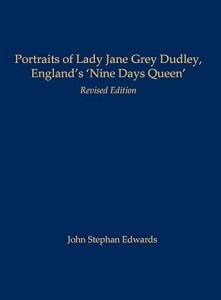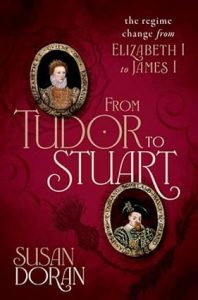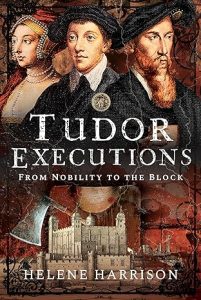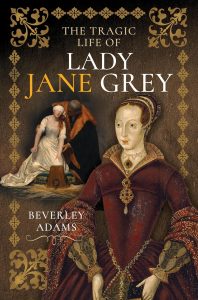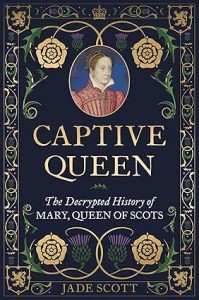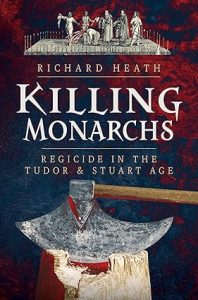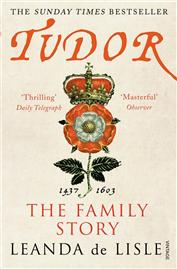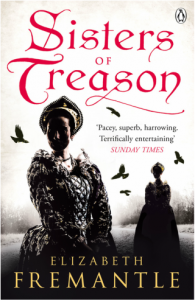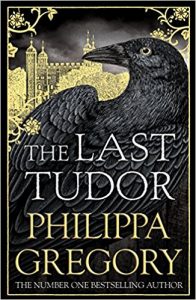15 January – Women of the Anarchy by Sharon Bennett Connolly
‘In 1135, Stephen of Blois usurped the throne, stealing it from his cousin Empress Matilda and sparking a nineteen-year civil war that would become known as the Anarchy, one of the bloodiest periods in English history. On the one side is Empress Matilda. The sole surviving legitimate child of Henry I, she is fighting for her birthright and that of her children. On the other side is her cousin, Queen Matilda, supporting her husband, Stephen, and fighting to see her own son inherit the English crown. Both women are granddaughters of St Margaret, Queen of Scotland, and descendants of Alfred the Great of Wessex. Empress Matilda was the first woman to claim the throne of England in her own right, but did not gain the support of the barons. When Queen Matilda’s husband King Stephen was captured by the Empress’s forces, it was down to her to keep the fight going, and to negotiate for her husband’s release. Women of the Anarchy demonstrates how these women, unable to wield a sword, were prime movers in this time of conflict and lawlessness. It show how their strengths, weaknesses and personal ambitions swung the fortunes of war one way – and then the other.’
Further details – Amazon.co.uk
Further details – Amazon.co.uk
30 January – Tudor Feminists: 10 Renaissance Women Ahead of their Time by Rebecca Wilson
‘The term ‘feminist’ would have been anachronistic in the Tudor period, but surely we would not hesitate to call the lady, who would be queen, Anne Boleyn, a feminist? All ten women, from Catherine Par to Margaret Beaufort, lived their lives in a way that challenged the patriarchal world they lived in. Each chapter is dedicated to one remarkable woman, ahead of her time. It explores her achievements and examines the impacts she had on a male-dominated world, while placing her in the context of her particular circumstance and background. These Renaissance women, from the high born to the merchant class, were rule breakers, they railed against the rigid social norms of their time and stand out vividly against a backdrop of domestic servitude.’
Further details – Amazon.co.uk
28 February – Women’s Lives in the Tudor Era by Amy McElroy
‘Women in the Tudor age are often overshadowed by their male counterparts. Even those of royalty were deemed inferior to males. Whilst women may have been classed as the inferior gender, women played a vital role in Tudor society. As daughters, mothers and wives they were expected to be obedient to the man of the household, but how effective would those households be without the influence of women? Many opportunities including much formal education and professions were closed to women, their early years spent imitating their mothers before learning to run a household in preparation for marriage. Once married their responsibilities would vary greatly according to their social status and rank. Widowhood left some in vulnerable conditions while for others it enabled them to make a life for themselves and become independent in a largely patriarchal society. Women’s Lives in the Tudor Era aims to look at the roles of women across all backgrounds and how expectations of them differed during the various stages of life.’
Further details – Pen and Sword
12 February – Portraits of Lady Jane Grey Dudley, England’s ‘Nine Days Queen’ (Revised edition) by J Stephan Edwards
‘This revised edition provides important new additions to a previous title by the same author published in 2014. Since that earlier work, two ‘lost’ portraits said to depict Jane Grey Dudley have re-emerged and are considered here in much greater detail. Lady Jane Grey Dudley was proclaimed Queen of England on 10 July 1553 following the untimely death of Henry VIII’s only son and successor, King Edward VI. But sixteen-year-old Jane lacked the support of a majority of her would-be subjects, who rallied instead to Henry VIII’s eldest daughter, Mary Tudor. Jane was deposed after just nine days, earning for her the sobriquet ‘The Nine Days Queen.’ She was imprisoned in the Tower for six months before finally being executed on 12 February 1554. Queen Jane remains the only English monarch of the past five centuries for whom no genuine portrait is known to have survived. Dozens of images have been put forward over those five centuries, but none has yet been conclusively authenticated. This work remains the only comprehensive academic study of the iconography of Jane Grey Dudley ever published. Twenty-nine surviving portrait-images said to depict Jane have been carefully and systematically sought out, analyzed, and contextualized in an effort to determine whether any of them may be a reliable likeness. A handful of additional paintings all now lost are also discussed in detail. Finally, the single written account of Jane’s physical appearance, an account upon which historians have relied over the past century, is analyzed for its own authenticity.
28 February – Sisters of Richard III: The Plantagenet Daughters of York by Sarah J Hodder
‘This book is the narrative of three women of York, sisters to not one, but two kings of England. Anne, Elizabeth and Margaret Plantagenet were the daughters of Richard, Duke of York and his wife, Cecily Neville, and therefore sisters to Edward IV and Richard III. These women watched from the sidelines as their father challenged England’s anointed king and lost his life, as their brothers fought together for the throne of England and then amongst themselves and as the Plantagenet dynasty fell, making way for the reign of the Tudors. But they were not just bystanders; they had their own stories to tell. Anne of York was married to the Lancastrian Duke of Exeter who sided against her father and brother, before finding later happiness, albeit briefly, with her second husband. Elizabeth of York married John de la Pole, Duke of Suffolk and became the mother of eleven children who would become thorns in the side of the Tudor kings and Margaret of York became Duchess of Burgundy, a hugely influential woman in her adopted kingdom although she never stopped supporting her family back in England. Between them, they witnessed and contributed to one of the most turbulent times in English history yet they have naturally been overshadowed by their more famous brothers. This is their story.
Further details – Pen and Sword
Further details – Amazon.co.uk
29 February – Young Elizabeth: Princess. Prisoner. Queen by Nicola Tallis
‘Elizabeth I is one of England’s most famous monarchs, whose story as the ‘Virgin Queen’ is well known. But queenship was by no means a certain path for Henry VIII’s younger daughter, who spent the majority of her early years as a girl with an uncertain future.
Before she was three years old Elizabeth had been both a princess, and then a bastard following the brutal execution of her mother, Anne Boleyn. After losing several stepmothers and then her father, the teenage Elizabeth was confronted with the predatory attentions of Sir Thomas Seymour. The result was devastating, causing a heartbreaking rift with her beloved stepmother Katherine Parr.
Elizabeth was placed in further jeopardy when she was implicated in the Wyatt Rebellion of 1554 – a plot to topple her half-sister, Mary, from her throne. Imprisoned in the Tower of London where her mother had lost her life, under intense pressure and interrogation Elizabeth adamantly protested her innocence. Though she was eventually liberated, she spent the remainder of Mary’s reign under a dark cloud. On 17 November 1558, however, the uncertainty of Elizabeth’s future came to an end when she succeeded to the throne at the age of twenty-five.
When Elizabeth became queen, she had already endured more tumult than many monarchs experienced in a lifetime. This colourful and immensely detailed biography charts Elizabeth’s turbulent and unstable upbringing, exploring the dangers and tragedies that plagued her early life. Nicola Tallis draws on primary sources written by Elizabeth herself and her contemporaries, providing an extensive and thorough study of an exceptionally resilient youngster whose early life would shape the queen she later became. The heart racing story of Elizabeth’s youth as she steered her way through perilous waters towards England’s throne is one of the most sensational of its time.’
Further details – Michael O’Mara Books
28 March – 1000 Tudor People by Melita Thomas
‘The incredible lives and deaths of 1000 Tudor people are explored in this authoritative single volume: royalty, military and religious leaders, Lords Chancellor, Knights of the Garter, philosophers, traders, gardeners, musicians, rebels, witches and many more feature in this illustrated compendium. Every Tudor follower should have this as their companion.’
25 April – The Waiting Game: The Untold Story of the Women Who Served the Tudor Queens by Nicola Clark
‘Every Tudor Queen had ladies-in-waiting. They were her confidantes and her chaperones. Only the Queen’s ladies had the right to enter her most private chambers, spending hours helping her to get dressed and undressed, caring for her clothes and jewels, listening to her secrets. But they also held a unique power. A quiet word behind the scenes, an appropriately timed gift, a well-negotiated marriage alliance were all forms of political agency wielded expertly by women.
The Waiting Game explores the daily lives of ladies-in-waiting, revealing the secrets of recruitment, costume, what they ate, where (and with whom) they slept. We meet María de Salinas, who travelled to England with Catherine of Aragon when just a teenager and spied for her during the divorce from Henry VIII. Anne Boleyn’s lady-in-waiting Jane Parker was instrumental in the execution of not one, but two queens. And maid-of-honour Anne Basset kept her place through the last four consorts, negotiating the conflicting loyalties of her birth family, her mistress the Queen, and even the desires of the King himself. As Henry changed wives, and changed the very fabric of the country’s structure besides, these women had to make choices about loyalty that simply didn’t exist before. The Waiting Game is the first time their vital story has been told.’
Further details – Amazon.co.uk
2 May – Thorns, Lust and Glory: The betrayal of Anne Boleyn by Estelle Paranque
‘Anne Boleyn has mesmerised the English public for centuries. Her tragic execution, orchestrated by her own husband, never ceases to intrigue. How did this courtier’s daughter become the queen of England, and what was it that really tore apart this illustrious marriage, making her the whore of England, an abandoned woman executed on the scaffold? While many stories of Anne Boleyn’s downfall have been told, few have truly traced the origins of her tragic fate.
In Thorns and Glory, Estelle Paranque takes us back to where it all started: to France, where Anne learned the lessons that would set her on the path to becoming one of England’s most infamous queens. At the court of the French king as a resourceful teenage girl, Anne’s journey to infamy began, and this landmark biography explores the world that shaped her, and how these loyalties would leave her vulnerable, leading to her ruin at the court of Henry VIII.
A fascinating new perspective on Tudor history’s most enduring story, Thorns and Glory is an unmissable account of a queen on the edge.’
Further details – Edbury Press
Further details – Amazon.co.uk
9 May – Mary I: Queen of Sorrows by Alison Weir
‘Adored only child of Henry VIII and his Queen, Katherine of Aragon, Princess Mary is raised in the golden splendour of her father’s court. But the King wants a son and heir.
With her parents’ marriage, and England, in crisis, Mary’s perfect world begins to fall apart. Exiled from the court and her beloved mother, she seeks solace in her faith, praying for her father to bring her home. But when the King does promise to restore her to favour, his love comes with a condition.
The choice Mary faces will haunt her for years to come – in her allegiances, her marriage and her own fight for the crown. Can she become the queen she was born to be?’
Further details – Amazon.co.uk
6 June – From Tudor to Stuart: The Regime Change from Elizabeth I to James I by Susan Doran
‘From Tudor to Stuart: The Regime Change from Elizabeth I to James I tells the story of the dramatic accession and first decade of the reign of James I and the transition from the Elizabethan to the Jacobean era, using a huge range of sources, from state papers and letters to drama, masques, poetry, and a host of material objects.
The Virgin Queen was a hard act to follow for a Scottish newcomer who faced a host of problems in his first years as king: not only the ghost of his predecessor and her legacy but also unrest in Ireland, serious questions about his legitimacy on the English throne, and even plots to remove him (most famously the Gunpowder Plot of 1605). Contrary to traditional assumptions, James’s accession was by no means a smooth one.
The really important question about James’s reign, of course, is the extent of change that occurred in national political life and royal policies. Sue Doran also examines how far the establishment of a new Stuart dynasty resulted in fresh personnel at the centre of power, and the alterations in monarchical institutions and shifts in political culture and governmental policies that occurred. Here the book offers a fresh look at James and his wife Anna, suggesting a new interpretation of their characters and qualities.
But the Jacobean era was not just about James and his wife, and Regime Change includes a host of historical figures, many of whom will be familiar to readers: whether Walter Raleigh, Robert Cecil, or the Scots who filled James’s inner court. The inside story of the Jacobean court also brings to life the wider politics and national events of the early seventeenth century, including the Gunpowder Plot, the establishment of Jamestown in Virginia, the Plantations in Ulster, the growing royal struggle with parliament, and the doomed attempt to bring about union with Scotland.
Further details – Oxford University Press
Further details – Amazon.co.uk
15 June – Heroines of the Tudor World by Sharon Bennett Connolly
‘These are the women who ruled, the women who founded dynasties, the women who fought for religious freedom, their families and love. These are the women who made a difference, who influenced countries, kings and the Reformation. Heroines of the Tudor World focuses on the women who lived through the Renaissance and Reformation, examining the threats and challenges they faced and how they overcame them. Studying regents, writers, nuns and queens, and taking in the likes of Elizabeth Barton, Anne Boleyn, Catherine de Medici, Bess of Hardwick and Elizabeth I, Sharon Bennett Connolly shines the spotlight on the women who helped to shape Early Modern Europe.’
Further details – Amberley Publishing
Further details – Amazon.co.uk
20 June – The Thistle and The Rose: The Extraordinary Life of Margaret Tudor by Linda Porter
‘Margaret, the first Tudor princess and queen consort and queen regent of Scotland, is the forgotten Tudor. Yet the elder sister of Henry VIII led a life of great drama, composed in equal parts of privilege and pain, highlighted by personal danger, hardship and loss. Overlooked or dismissed by historians as ‘Henry VIII in a dress’ (not, in itself, necessarily an insult), Margaret has been ill-served by superficial biographies or heavy-handed academic attempts to paint her as an early feminist prototype.
Yet recent research has revealed a quite different woman from the popular image of an oversexed whinger, whose main interests were her wardrobe and attractive young men. The child-woman who, at the age of thirteen, married James IV of Scotland, one of the most charismatic of all British kings, became a successful queen consort, presiding over a colourful and cultured court at some of Scotland’s most beautiful palaces. James’ death at the disastrous battle of Flodden in 1513 transformed Margaret’s world, forcing her to make stark choices for which she has been roundly condemned. But her two spells as regent for her young son, James V, and her determination to manage the fractious relationship between England and Scotland, reveal a true dynast with considerable diplomatic skills, as well as a loving mother committed to the welfare of her son amidst the swirling currents of Scottish politics and family feuds.
The Thistle and the Rose reveals a woman who was a gifted politician and diplomatist. It will tell a story of sibling rivalry between Margaret and her brother, Henry VIII, going back to their childhoods, underlined by Henry’s ambivalent attitude to his sister’s welfare and his refusal to acknowledge her son, the nearest male to him in blood until 1537, as his heir. It will also explore Margaret’s disastrous second marriage to Archibald Douglas, earl of Angus, and her third, little-known marriage to Henry Stewart. Her desperate flight to England while heavily pregnant in 1515 and her year-long reunion with her brother and sister, Mary, will also receive the attention they deserve, as will her relationships with her wayward daughter, Margaret Douglas, and her son’s two French wives. Margaret’s tragedy is that of a mother whose affection was not returned by her children and who has been belittled by history. Her triumph, on the other hand, is that of a true Tudor who had made a significant contribution to the culture and politics of her time.’
Further details – Bloomsbury Publishing
Further details – Amazon.co.uk
22 June – The Succession Debate and Contested Authority in Elizabethan England, 1558-1603 by Elizabeth Tunstall
‘This book examines the succession debate in England during the reign of Elizabeth I. It considers the succession question in its entirety, instead of dividing the topic into early or late periods as has been typically the case. Commencing with a consideration of the succession tracts and the laws which governed the succession, this book seeks to examine the matter in terms of its original sixteenth-century context and how the participants of the debate understood the issue. With the succession issue outlined, the main parties of the debate – those being the Queen, her Privy Council and Parliament – are considered in turn, exploring the effect of the succession debate upon English considerations of government and royal prerogative.’
Further details – Palgrave Macmillan
Further details – Amazon.co.uk
30 July – Tudor Executions: From Nobility To The Block by Helene Harrison
‘The Tudors as a dynasty executed many people, both high and low. But the nobility were the ones consistently involved in treason, either deliberately or unconsciously. Exploring the long sixteenth century under each of the Tudor monarchs gives a sense of how and why so many were executed for what was considered the worst possible crime and how the definition of treason changed over the period. This book examines how and why Tudor nobles like Edward Stafford, 3rd Duke of Buckingham; Queen Consort Anne Boleyn; Henry Howard, Earl of Surrey; and Robert Devereux, 2nd Earl of Essex, fell into the trap of treason and ended up on the block under the executioner’s axe. Treason and the Tudor nobility seem to go hand in hand as, by the end of the sixteenth century and the advent of the Stuart dynasty, no dukes remained in England. How did this happen and why?’
Further details – Amazon.co.uk
30 July – Henry VIII and the Plantagenet Poles: The Rise and Fall of a Dynasty by Adam Pennington
‘The story of King Henry VIII, a man who married six times only to execute two of those wives, is part of Great Britain’s national and international identity. Each year, millions of people walk around the Tower of London, Hampton Court Palace and Hever Castle, plus many other historical sites, taking in and hoping to glean some sense of the man and the myth, and yet there is a period from Henry VIII’s life which remains largely overlooked, a period in which he chose not to execute wives, servants or ministers, but instead turned on another group entirely – his own family. Like practically all members of the nobility of the time, Henry VIII descended from King Edward III, which ensured a ready-made crop of royal cousins were in abundance at his court, and awkwardly for the king, these cousins often possessed much greater claims to the throne than he did. The house of Tudor was one which should never have been, let alone taken the throne.
Upstarts in every sense of the word, their ancestry, whilst (almost) noble, was by no means as grand as many a family in England, and it is against this backdrop that this book was created. The Pole family, the subjects of the story, were royalty in secret. Lady Margaret Pole, Countess of Salisbury, the family matriarch, was a niece of King Edward IV and Richard III, making her a first cousin of Elizabeth of York, the first Tudor queen consort, and thus a first cousin once removed of Henry VIII. Margaret Pole was, therefore, one of the most senior members of the nobility at the Tudor court, and through her, her sons, her daughter, and her grandchildren possessed a dangerous name and dangerous bloodline, which put them on a collision course with the most volatile man ever to sit the throne of England. They were the old guard, the house of Plantagenet, the greatest ruling dynasty in English history, the true royal family, and this, coupled with the monumental shifts which England underwent during the reign of Henry VIII, all but ensured their destruction. For centuries, their story has been overlooked, or at best, fleetingly covered, but when one digs deep, a story as audacious and juicy as it’s possible to be soon emerges.’
Further details – Pen and Sword
Further details – Amazon.co.uk
30 August – The Tragic Life of Lady Jane Grey by Beverley Adams
‘Lady Jane Grey, the nine-day queen is considered to be one of the most tragic characters in English history. In July 1553 when King Edward VI died at the age of just 15 years old, the Tudor dynasty fell into chaos. The king had no legitimate male heirs and was determined his half-sisters Mary and Elizabeth would not inherit his throne, despite his father Henry VIII stating in his will that they should. We are led to believe that on Edward’s instructions his cousin Lady Jane Grey was to be proclaimed queen. But who was she? Was she the innocent young girl that our history books tell us she was, or a religious fanatic with the aim of keeping Mary off the throne and England Protestant? Or was she nothing but a pawn to men in the game of power and politics, abused by her parents to marry against her will all for a crown she did not want? This book looks into her life from her early years in relative seclusion at the family home at Bradgate through to her tragic end on the scaffold at the Tower of London, executed on the orders of her cousin Queen Mary. What was her place within the Tudor royal family, was she ever entitled to claim the throne of England, and do we even recognise her as a true queen today.’
Further details – Amazon.co.uk
30 September – Planning the Murder of Anne Boleyn by Caroline Angus
Almost 500 years have passed since the death of Anne Boleyn, and yet, there has never been a suggestion she was guilty of the crimes which saw her executed. Attempts to muddy Anne’s reputation throughout history have not lessened her popularity nor convinced anyone she was an adulterer. But many myths surrounding Anne’s conviction for sleeping with George Boleyn, Henry Norris, Francis Weston, William Brereton, and Mark Smeaton have cropped up due to centuries of lies, slander, and misinformation from detractors. One month after Anne was executed, the Convocation of Canterbury ratified the paperwork detailing her arrest, conviction, execution, and the annulment of the marriage between King Henry VIII and his second wife. As parliament had already ruled Anne’s only child, Princess Elizabeth, was no longer heir to the throne, all the paperwork surrounding the trial was destroyed. No trace of her charges, witness statements, evidence, or even Archbishop Thomas Cranmer’s reasoning for annulling the royal marriage survived the mass destruction. Everyone was supposed to forget Anne Boleyn and accept Queen Jane. But why did Anne Boleyn ever need to die? King Henry had started little more than an infatuation with Jane Seymour in December 1535.
Yet, many saw the opportunity to pounce, not to reduce Anne’s influence but to increase Princess Mary’s standing. As Vicegerent Thomas Cromwell and Ambassador Eustace Chapuys whispered of alliances in secret meetings, the Catholic nobility and the White Roses began to hatch their plan to restore the king’s daughter, Princess Mary, to her rightful place at court. Just as Katharine of Aragon died, Anne Boleyn felt secure as England’s queen, only to find that her adversary’s death would soon bring on her own. Why did political and religious enemies of Thomas Cromwell seek him in the months leading to Anne’s death, expecting his co-operation to restore Princess Mary? Did Jane Seymour have any significance and why did King Henry and Thomas Cromwell get into a public shouting match at a dinner party? The answers lie not in what evidence remains of court life in early 1536 but in the gaps left behind. None of the characters that played a role in Anne Boleyn’s death were strangers; all had connections, alliances and opportunities, and when their pasts and futures are laid together, we can see how a haphazard plan to end a queen’s life had almost nothing to do with her at all.’
Further details – Pen and Sword
3 October – The Eagle and the Hart: The Tragedy of Richard II and Henry IV by Helen Castor
‘Richard of Bordeaux and Henry Bolingbroke were first cousins, born just three months apart. Their two lives were from the beginning entwined. When they were still children, Richard was crowned King Richard II with Henry at his side, carrying the sword of state: a ten-year-old lord in the service of his ten-year-old king.
Yet, as the animals on their heraldic badges showed, they grew up to be opposites: Richard was the white hart, a thin-skinned narcissist, and Henry the eagle, a chivalric hero, a leader who inspired loyalty where Richard inspired only fear. Henry had all the qualities Richard lacked, all the qualities a sovereign needed, bar one: birth right. Increasingly threatened by his charismatic cousin, Richard became consumed by the need for total power, in a time of constant conspiracies, rebellions and reprisals. When he banished Henry into exile, the stage was set for a final confrontation, as the hart became the tyrant and the eagle his usurper.’
24 October – Captive Queen: The Decrypted History of Mary, Queen of Scots by Jade Scott
‘A fascinating and revealing new biography of Mary Queen of Scots, drawing on dozens of newly decoded letters.
For almost two decades before her execution at Fotheringhay Castle in 1587, Mary Queen of Scots was a prisoner. From her chambers, she wrote countless letters, many encrypted using complex ciphers to prevent her communications from being intercepted. In this way, she used language to exert her will and her influence, even while incarcerated.
More than 400 years after her death, fifty-seven of these encoded letters were unearthed in a French archive and decoded, a discovery described by experts as a ‘literary and historical sensation’ and the most important new find on Mary for more than a century.
In Captive Queen: The Decrypted History of Mary, Queen of Scots, Jade Scott, a historian and expert on Mary’s correspondence, draws on these ground-breaking letters to paint a vivid portrait of one of history’s most compelling figures. She interrogates Mary’s complex relationships with friends and enemies throughout her imprisonment, illuminating her strategic expertise and bringing Mary’s captivity to life like never before, in her own words.’
Further details – Amazon.co.uk
24 October – Regina: The Queens Who Could Have Been by Emily Murdoch Perkins
‘What queens would England have had if firstborn daughters, not firstborn sons, had inherited the throne?
We may think of princesses as dutiful and elegant, wearing long flowing dresses, but the eldest daughters of England’s kings have been very different.
Political intriguers. Abducted nuns who demanded divorces. Murderers.
It’s time we rediscovered the politicians we lost, the masterminds we see negotiating nunneries not armies, the personalities shining brilliantly even hundreds of years later: the queens who should have been.
Let’s meet them.’
Further details – The History Press
Further details – Amazon.co.uk
18 November – The Illustrated Tudor Dictionary by Simon Sandys-Winsch
‘ The Illustrated Tudor Dictionary is unique. For the first time, the Tudor Age has been brought to life in an illustrated dictionary format that is clear and easy to read. It is aimed at anyone who wants to widen and deepen their knowledge of sixteenth-century England. Cross-referencing is made easy with highlighted text and numerous, beautiful images provide further insight into this period. All notable characters, events and themes are covered, ranging from Henry VIII, education and the Battle of Bosworth to Francis Drake, the Reformation and the Spanish Armada. Several entries also deal with lesser-known characters and aspects such as Will Somer, marriage and Parliament. The book aims to include all of the important facts but, at the same time, provide the reader with fascinating trivia. The following questions, for example, are answered: Which king’s head was used as a football? Who was the first female ambassador in European history? Who had to be buried at midnight to prevent a riot? Why was a leading European academic abducted, blindfolded and forced into a fishing boat? Which ‘wizard’ claimed he could communicate with angels? Why is a hangman’s rope displayed in a school cabinet? Which monarch always cheated at cards? Written in a concise and balanced style, The Illustrated Tudor Dictionary is the best introduction for students and lovers of history to the heroes and villains, the saints and sinners and the glories and disasters of the Tudor Age.’
Further details – Pen and Sword
Further details – Amazon.co.uk
30 November – Stuart Spouses: A Compendium of Consorts from James I of Scotland to Queen Anne of Great Britain by Heather R Darsie
‘Stuart Spouses looks at the oft-overshadowed consorts of the Stuart monarchs, from 1406 to 1714\. By focusing on these people and detailing their rises to matrimony, the trials and tribulations of their courtships, and the impact their unions and dissolutions had on the kingdoms of Scotland, England, Ireland, and Wales, one learns not only the history of these kingdoms but the true, sometimes soft, power behind the throne.’
Further details – Pen and Sword
Further details – Amazon.co.uk




